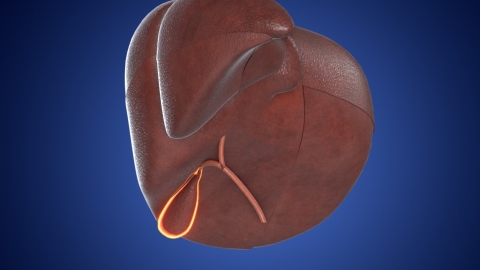What causes pain from gallstones?
Gallbladder stone pain may be caused by dietary irritation, changes in body position, acute cholecystitis, biliary obstruction, or biliary colic. Symptoms can be improved through dietary adjustments, changing body positions, medication, and relieving spasms. If the pain persists or is accompanied by fever or jaundice, prompt medical attention is necessary.

1. Dietary irritation: Consuming excessive high-fat and high-cholesterol foods (such as fried foods and animal offal) can stimulate strong gallbladder contractions, causing the stones to rub against the gallbladder wall and trigger pain, which typically occurs 1–2 hours after meals. It is recommended to adjust the diet to include low-fat, low-cholesterol foods such as vegetables, lean meat, and whole grains, and to avoid overeating.
2. Body position changes: Rapid changes in posture (such as bending over or turning) may cause gallstones to shift within the gallbladder, blocking the cystic duct or irritating the gallbladder wall, resulting in sudden pain, usually located in the upper right abdomen. Daily movements should be slowed down to avoid quick bending or twisting. Sleeping in a right-side lying position may help reduce irritation from the stones.
3. Acute cholecystitis: Gallstones blocking the cystic duct can lead to bacterial growth and acute inflammation. Inflammation irritates the gallbladder mucosa, causing persistent pain along with fever, nausea, and vomiting. Under medical guidance, patients may use medications such as cefixime dispersible tablets, anti-inflammatory and bile-promoting tablets, and phloroglucinol injection to relieve symptoms.
4. Biliary obstruction: When gallstones dislodge into the bile duct and block the biliary tract, bile outflow is obstructed, increasing pressure within the biliary system and causing pain. This may be accompanied by yellowing of the skin and eyes (jaundice) and darkened urine. Under medical supervision, medications such as ademetionine enteric-coated tablets, ursodeoxycholic acid capsules, and cefoperazone-sulbactam sodium injection may be used to alleviate discomfort.
5. Biliary colic: Sudden blockage of the cystic duct by a gallstone causes the gallbladder to contract intensely in an attempt to expel the stone, leading to paroxysmal severe pain that may radiate to the shoulder and back, accompanied by sweating and nausea. As directed by a physician, medications such as anisodamine injection, ibuprofen sustained-release capsules, and pethidine injection can be used to manage symptoms.
Daily care should include maintaining regular meal times to avoid prolonged fasting; keeping emotions stable to prevent stress and anxiety; and undergoing regular gallbladder ultrasound follow-ups to monitor changes in stone size and position.




